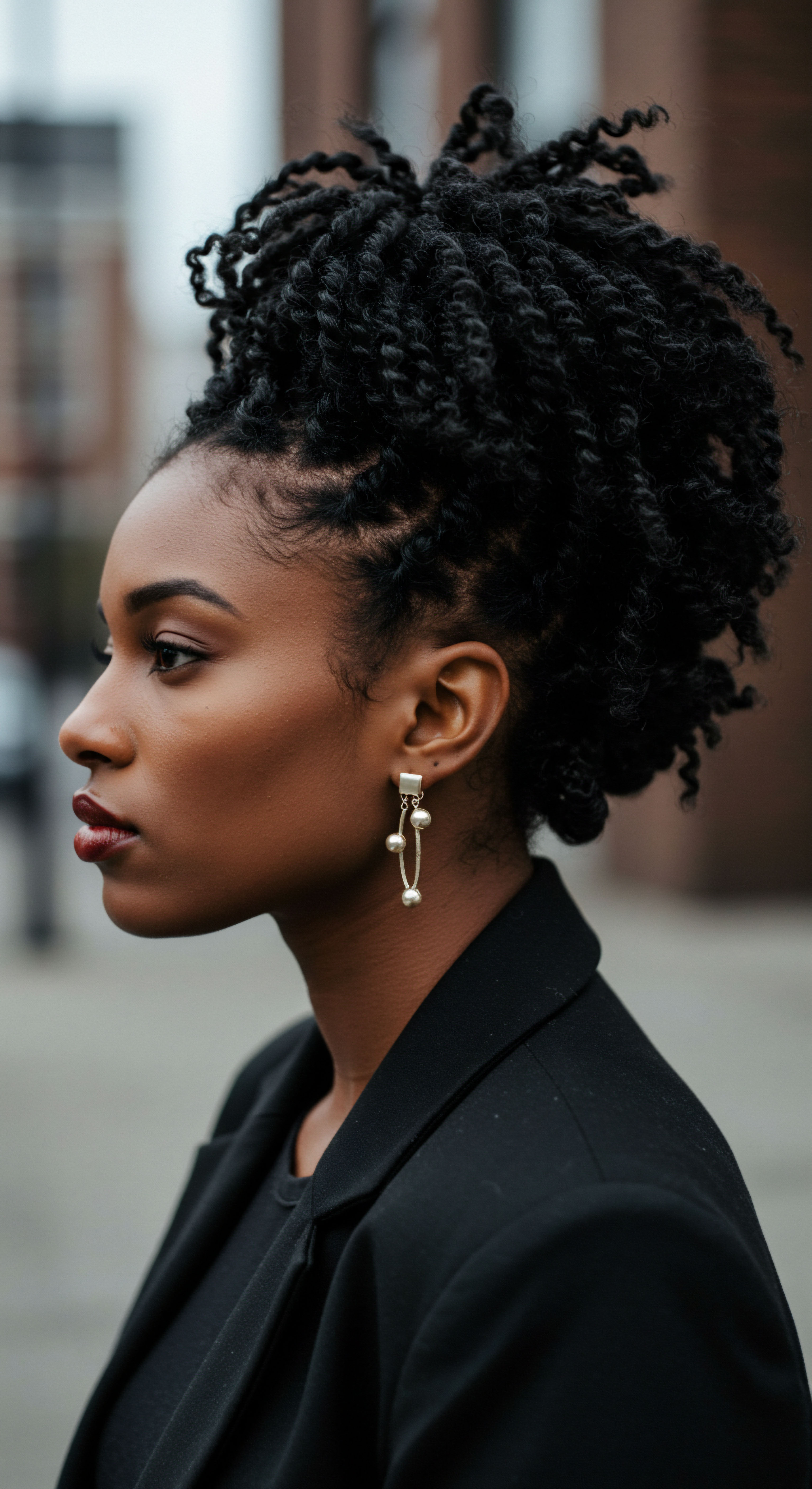
Roots
Consider the very essence of a strand of hair, not merely as a biological outgrowth, but as a living narrative, a silent testament to heritage and personal journey. When we speak of hair texture, particularly the glorious coils, kinks, and waves that distinguish Black and mixed-race hair, we are speaking of a delicate architecture, a structure with unique needs, especially as the world quiets for slumber. The night, often seen as a period of rest, can inadvertently become a time of unseen strain for these exquisite formations.
The foundational understanding of hair begins at its core, the follicle, a tiny pocket within the skin that dictates the strand’s shape as it emerges. For textured hair, this follicle is often elliptical or flattened, giving rise to the characteristic bends and twists. This unique cross-sectional shape means the hair strand itself is not perfectly round, leading to natural points of vulnerability along its length.
These curves, while beautiful, also mean that the cuticle, the protective outer layer composed of overlapping scales, is more exposed at the bends. When hair moves against a surface, like a pillowcase, these raised cuticles can snag, lift, and chip away, compromising the strand’s integrity.
A deeper appreciation of textured hair necessitates familiarity with its various classifications. While no single system perfectly captures the infinite diversity, the common classifications, such as those ranging from 3A to 4C, offer a shared vocabulary. Each designation speaks to the tightness of the curl pattern, directly influencing how the hair behaves and, critically, how it interacts with its surroundings during periods of rest. A looser wave might experience less friction than a tightly coiled strand, but both possess inherent qualities that call for thoughtful care during the night.
Understanding hair’s intrinsic architecture reveals its distinct vulnerabilities during nightly repose.
The essential lexicon of textured hair extends beyond curl patterns to terms like Porosity, the hair’s ability to absorb and retain moisture, and Elasticity, its capacity to stretch and return without breaking. These properties are not merely scientific descriptors; they are keys to understanding how a strand will respond to the dry environment of a bedroom or the constant pressure of a pillow. Hair with high porosity, for instance, might lose moisture more rapidly overnight, becoming brittle and prone to breakage. Conversely, hair with compromised elasticity might snap under the gentle pressure of movement against a surface.
Consider the hair growth cycle, a continuous dance of growth, rest, and shedding. During the anagen (growth) phase, strands are at their most vibrant, but even these youthful fibers require diligence. Telogen (resting) hair, preparing to shed, can be particularly susceptible to dislodgement if not protected.
Sleep protection, then, is not merely about preserving style; it is about honoring the natural rhythm of hair’s life, safeguarding it through every stage of its journey. The choices made before drifting off to sleep can significantly impact the longevity and vitality of each precious strand.
A holistic view of textured hair compels us to consider the myriad influencing factors on its condition. Beyond genetics, elements like hydration, nutrition, and even the microclimate of one’s sleeping space play a part. The dryness of indoor air, especially with heating or air conditioning, can wick away moisture from hair, leaving it parched.
This desiccation makes hair more rigid and less pliable, heightening its susceptibility to damage from friction. Thus, the nocturnal environment transforms from a simple backdrop to an active participant in hair health.

Ritual
The journey from understanding hair’s fundamental nature to truly caring for it during the night begins with the mindful adoption of protective rituals. This is where knowledge transforms into practice, where the quiet hours of slumber become an opportunity for deep conditioning and preservation. It is a shift from merely observing to actively participating in the hair’s wellbeing, recognizing that the right techniques and tools can turn potential harm into profound restoration.
The world of protective styling offers a vast array of choices, each serving as a nightly shield for textured strands. These styles minimize manipulation, reduce exposure to friction, and help maintain moisture.
- Braids ❉ Whether single braids or cornrows, these styles keep hair neatly contained, preventing tangles and snags against bedding. They are particularly effective for distributing tension evenly.
- Twists ❉ Similar to braids, two-strand twists or flat twists coil the hair upon itself, creating a compact form that reduces surface area exposure. This also aids in preserving curl definition for the next day.
- Buns ❉ A loose, high bun, often referred to as a “pineapple” for curly hair, gathers the hair at the crown of the head. This position lifts the bulk of the hair away from the pillow, significantly lessening friction and compression on the delicate ends.
The art of natural styling extends beyond daily definition to preparation for rest. Techniques that define curls, like finger coiling or shingling, when performed with appropriate products, can also set the hair in a more organized, less prone-to-tangle state for sleep. The goal is to minimize friction, which is the primary antagonist of hair health during the night. When individual strands are allowed to rub against each other or against fabric, the cuticle scales can lift and chip, leading to frizz, breakage, and dullness.
Thoughtful nightly practices safeguard hair from friction and moisture loss, preserving its vitality.
Wigs and hair extensions, while offering versatile styling during the day, also demand specific consideration for nighttime preservation. Leaving them unaddressed can lead to tangling, matting, and damage to both the extension hair and the natural hair underneath. Often, these require their own gentle braiding or twisting before being secured with a satin-lined cap or scarf. The underlying principle remains ❉ reduce friction and prevent undue stress on the hair.
While heat styling is generally approached with caution for textured hair, its implications for sleep protection are subtle yet significant. Hair that has been heat-straightened or thermally reconditioned can be particularly vulnerable to moisture loss and reversion if not properly protected overnight. The integrity of the straightened bonds can be compromised by humidity or friction, leading to frizz and loss of sleekness. Thus, securing such styles in a loose wrap or pin-curls, covered by a silk or satin scarf, becomes a vital step in maintaining the desired look and preventing damage.
The complete textured hair toolkit for sleep protection is a collection of seemingly simple items that hold immense power.
| Tool Silk/Satin Bonnet |
| Primary Benefit Reduces friction, retains moisture |
| How It Protects Smooth surface prevents cuticle damage and absorbs less moisture than cotton. |
| Tool Silk/Satin Pillowcase |
| Primary Benefit Minimizes friction, gentle on hair |
| How It Protects Allows hair to glide, reducing tangles and breakage, especially if a bonnet shifts. |
| Tool Hair Ties (silk/satin scrunchies) |
| Primary Benefit Prevents dents and breakage |
| How It Protects Soft fabric avoids harsh creases and pulling on strands when securing styles. |
| Tool Leave-in Conditioner/Oil |
| Primary Benefit Hydration, barrier |
| How It Protects Provides a protective layer, sealing in moisture overnight, reducing dryness. |
| Tool Selecting the right tools is paramount for effective nighttime hair preservation. |
The choice between a silk or satin bonnet and a pillowcase often comes down to personal comfort and hair volume. Both offer a smooth surface that allows hair to glide rather than snag, unlike cotton, which can absorb moisture and create friction. The difference is subtle, but impactful. Cotton fibers, under a microscope, appear rough and absorbent.
They act like tiny sponges, drawing moisture from the hair, and like miniature Velcro hooks, catching on delicate strands. Silk and satin, by contrast, possess a smooth, tightly woven surface that minimizes both moisture absorption and mechanical stress. This gentle interaction preserves the hair’s natural oils and keeps the cuticle layers lying flat, preventing frizz and breakage.
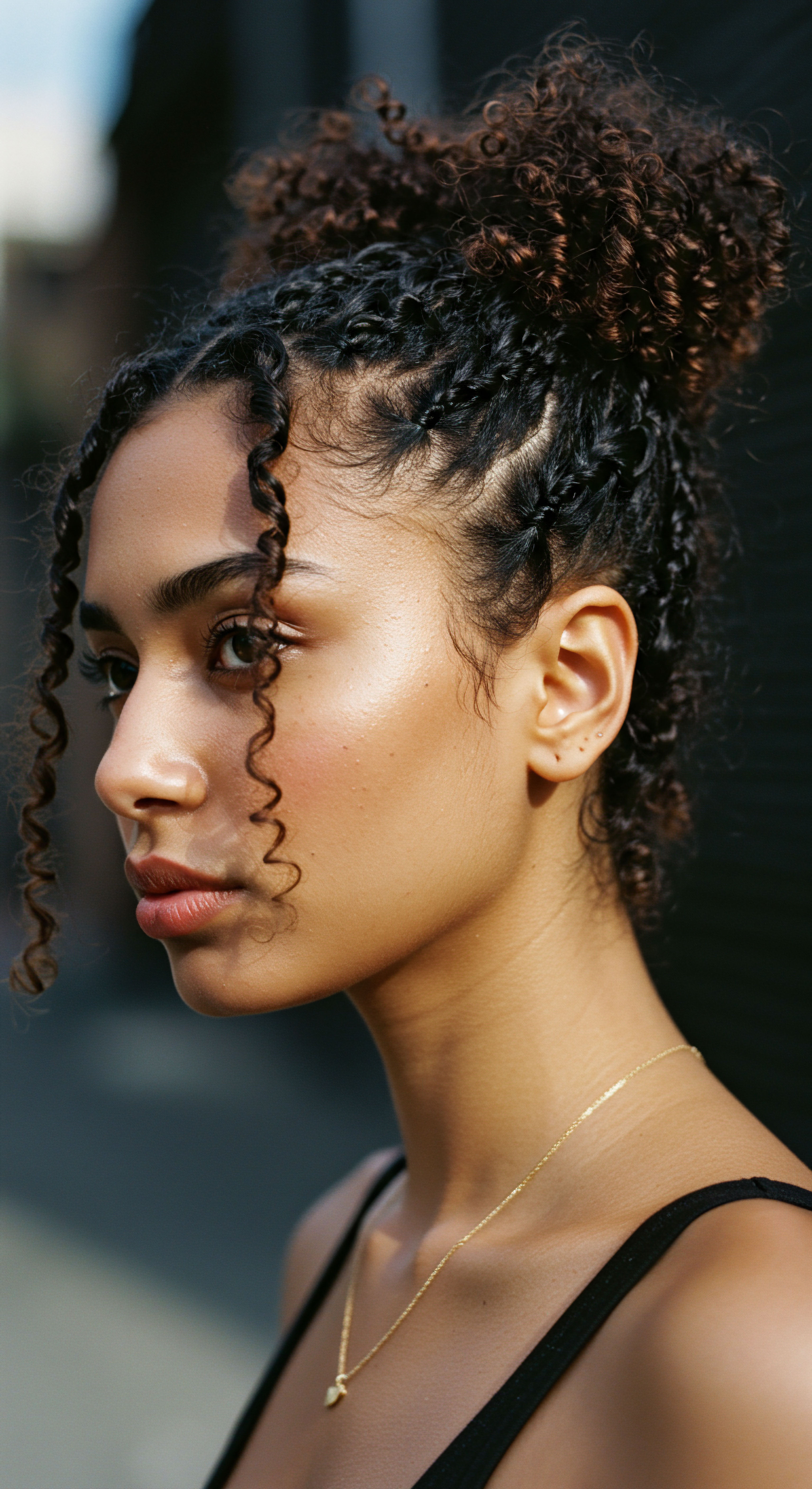
Relay
To truly grasp the profound interplay between hair texture and sleep protection, we must extend our understanding beyond surface-level care, delving into the biological intricacies, cultural narratives, and systemic influences that shape this experience. The question of how sleep affects textured hair is not a simple query; it is a gateway to a multi-dimensional inquiry, connecting the microscopic world of the hair shaft to broader societal contexts.
At a biological level, the unique helical structure of textured hair presents inherent challenges. Unlike straight hair, which has a relatively smooth, uniform surface, coiled and kinky hair exhibits a more irregular topography. This irregularity, while contributing to its magnificent volume and form, also means that the surface area prone to friction is significantly greater. Research into the mechanical properties of hair fibers has consistently demonstrated this.
For instance, a study published in the Journal of Cosmetic Science explored the frictional properties of human hair, noting that “the coefficient of friction for curly hair fibers is generally higher than that for straight hair fibers due to their helical structure and irregular surface.” This inherent characteristic means textured hair experiences greater resistance when rubbing against surfaces, such as pillowcases, leading to increased potential for cuticle lift and damage during nocturnal movements. Each bend in a coil becomes a potential point of weakness, a place where the protective cuticle can fray and eventually fracture.
The consequences of this increased friction extend beyond mere frizz. Over time, repeated mechanical stress during sleep can lead to Hygral Fatigue, a condition where the hair cuticle is repeatedly swollen by water absorption and then dried, leading to weakened protein bonds and increased breakage. This cycle is exacerbated when hair is not adequately protected during sleep, as the constant rubbing against absorbent materials like cotton pillowcases strips away moisture, prompting the hair to seek hydration from the air, only to be dried out again. This constant flux diminishes the hair’s elasticity and resilience.
The intricate physics of textured hair’s helical structure makes it uniquely vulnerable to sleep-induced friction.
Beyond the microscopic, cultural narratives have long underscored the importance of nighttime hair protection within Black communities. Head coverings, often adorned with symbolic patterns and rich fabrics, have served purposes beyond mere modesty or fashion. They were, and remain, a practical necessity for preserving intricate hairstyles, protecting hair from the elements, and maintaining its health.
The widespread adoption of satin bonnets and silk scarves is not a modern trend but a continuation of ancestral wisdom, adapting traditional practices to contemporary materials. This cultural continuity speaks to a deeply ingrained understanding of textured hair’s specific needs, passed down through generations.

What Cultural Practices Inform Hair Protection During Sleep?
Across various African diasporic cultures, the act of covering hair at night has been a quiet, yet powerful, ritual. From the elaborate headwraps of West Africa to the simpler coverings used in the Caribbean, these practices served to maintain hygiene, protect delicate styles, and preserve the health of the hair. This was particularly significant in times when daily washing was not feasible or desirable for complex styles. The materials used, often soft cloths or specially prepared fabrics, were chosen for their ability to minimize friction and retain moisture.
This deep-seated knowledge, rooted in practical necessity and cultural pride, provides a compelling backdrop to modern sleep protection strategies. It highlights that the pursuit of healthy textured hair is not a new scientific discovery, but a long-held communal wisdom.
The modern Bonnet, often made of satin or silk, stands as a direct descendant of these historical practices. Its widespread use is a testament to its effectiveness.
- Friction Reduction ❉ The smooth surface allows hair to glide, preventing tangles and cuticle damage.
- Moisture Retention ❉ Unlike cotton, satin and silk do not absorb hair’s natural oils or applied products, keeping strands hydrated.
- Style Preservation ❉ It helps maintain the integrity of braids, twists, and other styles, reducing the need for daily manipulation.
This wisdom is not merely anecdotal; it aligns perfectly with the scientific understanding of hair’s needs. The smooth, non-absorbent properties of silk and satin are precisely what textured hair requires to minimize friction and moisture loss, two primary concerns during sleep.
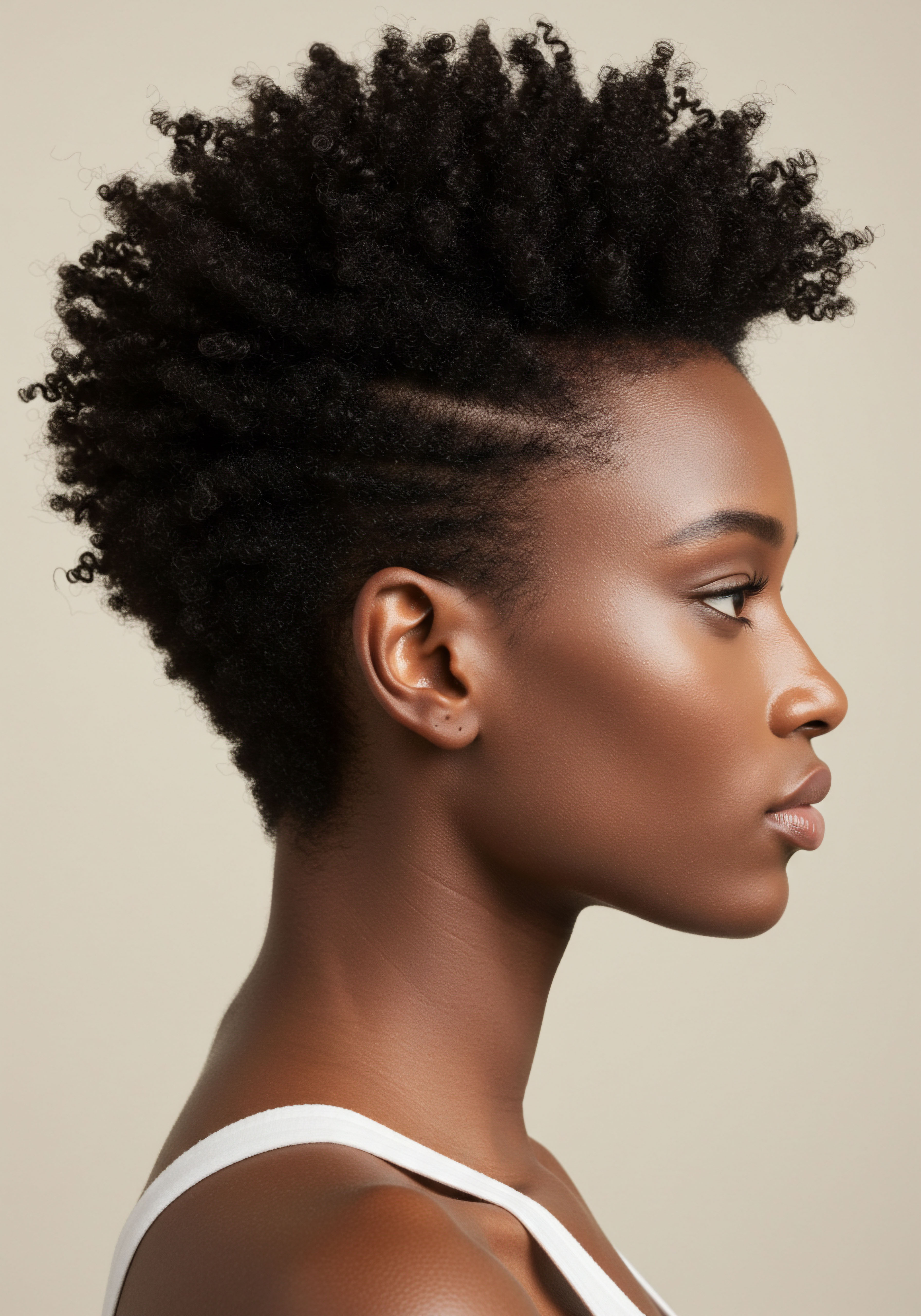
How Do Environmental Factors Impact Hair During Nighttime Rest?
Beyond direct contact, the ambient environment of the sleeping space significantly impacts hair health. Low humidity, common in heated or air-conditioned rooms, can strip hair of its vital moisture. This environmental desiccation makes hair more rigid and susceptible to mechanical damage. When hair is dry, its elasticity diminishes, meaning it is less able to stretch and recoil without breaking.
A study on the mechanical properties of hair demonstrates that “hair with lower moisture content exhibits reduced elasticity and increased stiffness, making it more prone to fracture under stress.” This vulnerability is compounded by the friction of movement during sleep. Thus, humidifying the bedroom air, or ensuring hair is well-moisturized before bed, becomes an additional layer of protection.
The intersection of sleep posture and hair damage is another subtle yet significant consideration. While a definitive, large-scale study directly linking specific sleep positions to textured hair damage is scarce, general principles of friction and pressure apply. Side sleepers or stomach sleepers might experience more concentrated pressure and rubbing on certain areas of their hair, particularly around the temples or nape of the neck.
This localized stress can lead to thinning or breakage in those specific zones. The use of a bonnet or silk pillowcase acts as a universal buffer, mitigating these localized pressures regardless of sleeping style.
The journey to truly personalized textured hair regimens requires an understanding of these deeper connections. It involves selecting ingredients that actively support moisture retention and strengthen the hair shaft.
| Ingredient Type Humectants (e.g. Glycerin, Hyaluronic Acid) |
| Mechanism of Action Attracts and draws moisture from the air to the hair. |
| Benefit for Sleep Protection Keeps hair pliable and less prone to brittleness in dry environments. |
| Ingredient Type Emollients (e.g. Shea Butter, Jojoba Oil) |
| Mechanism of Action Forms a protective barrier on the hair surface. |
| Benefit for Sleep Protection Seals in moisture, reduces friction, and adds slip. |
| Ingredient Type Proteins (e.g. Hydrolyzed Wheat Protein) |
| Mechanism of Action Strengthens the hair shaft, temporarily fills gaps in the cuticle. |
| Benefit for Sleep Protection Increases hair's resilience against mechanical stress and breakage. |
| Ingredient Type Incorporating these ingredients into evening routines fortifies hair against nocturnal stressors. |
Ultimately, addressing the challenges of textured hair protection during sleep requires a comprehensive approach. It necessitates respecting the hair’s unique biological makeup, drawing upon centuries of cultural wisdom, and applying modern scientific understanding to create a sanctuary for strands during the quiet hours. The outcome is not just preserved hair, but a deeper connection to self and heritage.
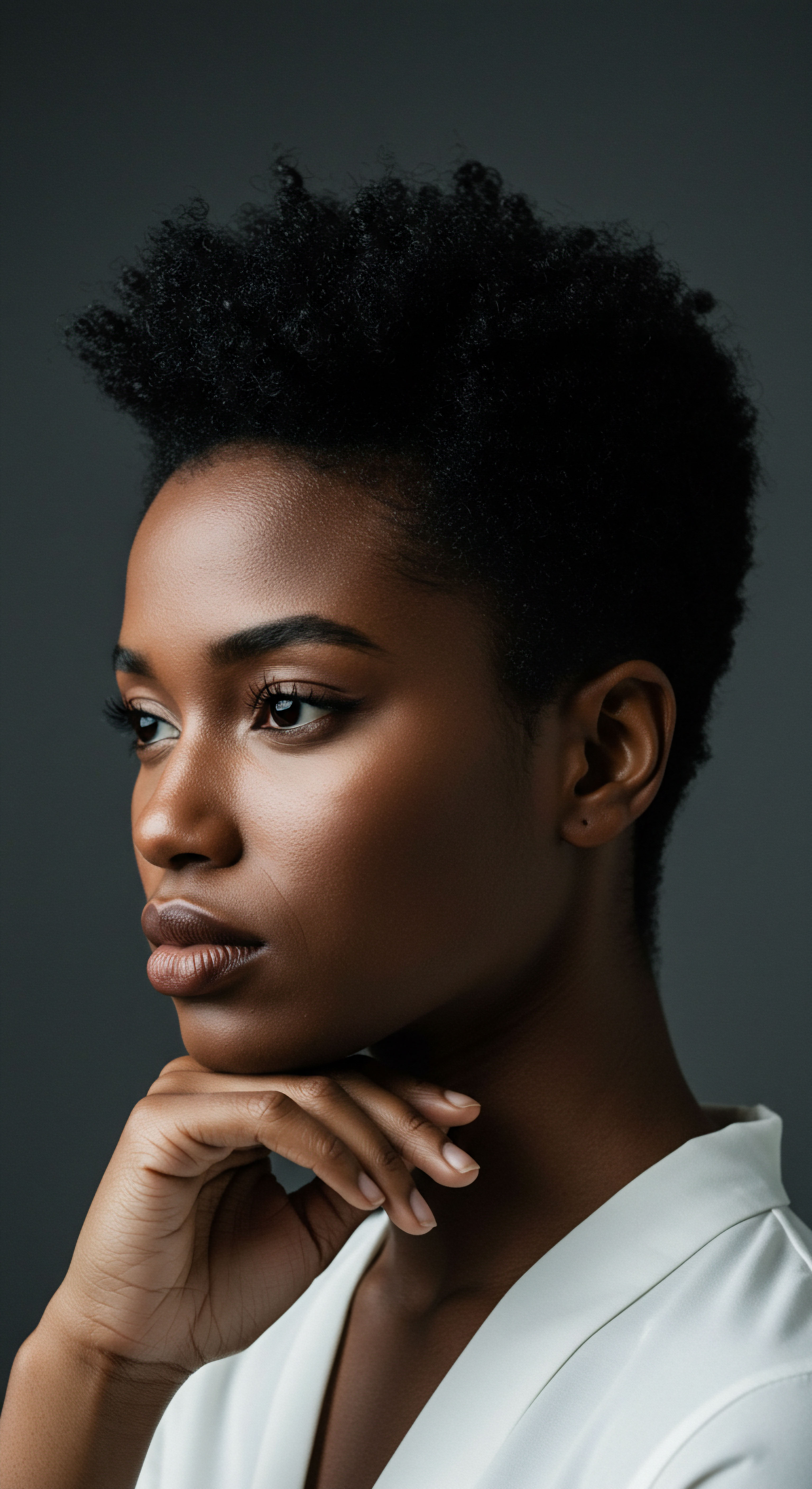
Reflection
As the moon ascends and the world settles into its nightly hush, our textured strands, those remarkable expressions of identity and ancestry, too seek a moment of gentle repose. The conversation around hair texture and sleep protection is far more than a mere set of instructions; it is an invitation to consider the delicate dance between biology and care, between the rhythms of our bodies and the wisdom passed down through generations. It asks us to view the quiet hours not as a period of neglect, but as a profound opportunity for nourishment and preservation. The journey to truly understand and care for textured hair is ongoing, a continuous unfolding of knowledge and practice, where every gentle touch and thoughtful choice contributes to its enduring health and vibrant story.
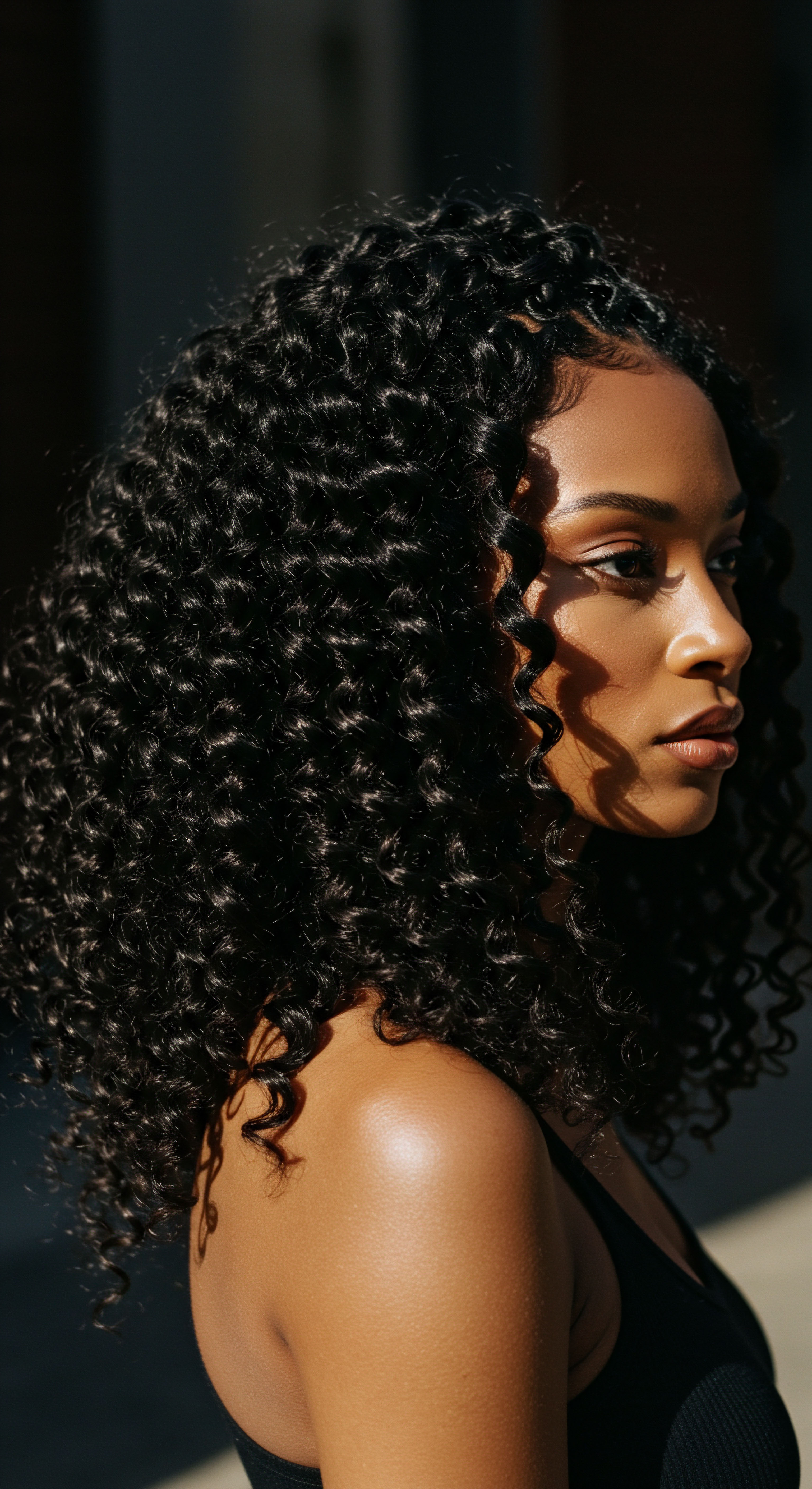
References
- Gray, J. Scott, R.J. & Waggoner, P.J. (2000). Frictional Properties of Human Hair. Journal of Cosmetic Science, 51(3), 167-184.
- Robbins, C.R. (2012). Chemical and Physical Behavior of Human Hair (5th ed.). Springer.
- Franbourg, A. Hallegot, P. Baltenneck, F. Freyssinet, J.M. & Bouillon, C. (2003). Current Research on Ethnic Hair. Journal of the American Academy of Dermatology, 48(6), S115-S119.
- Khumalo, N.P. Gumedze, F. & Ngwanya, R.M. (2010). The Effect of Hair Practices on Hair Breakage in African Women. Journal of the American Academy of Dermatology, 62(5), 862-868.
- Porter, R. & Waddington, R. (2002). The Mechanical Properties of Human Hair. In Hair Science ❉ The Physics of Hair (pp. 201-224). CRC Press.
- Rele, A.S. & Mohile, R.B. (2003). Effect of Mineral Oil, Sunflower Oil, and Coconut Oil on Prevention of Hair Damage. Journal of Cosmetic Science, 54(2), 175-192.